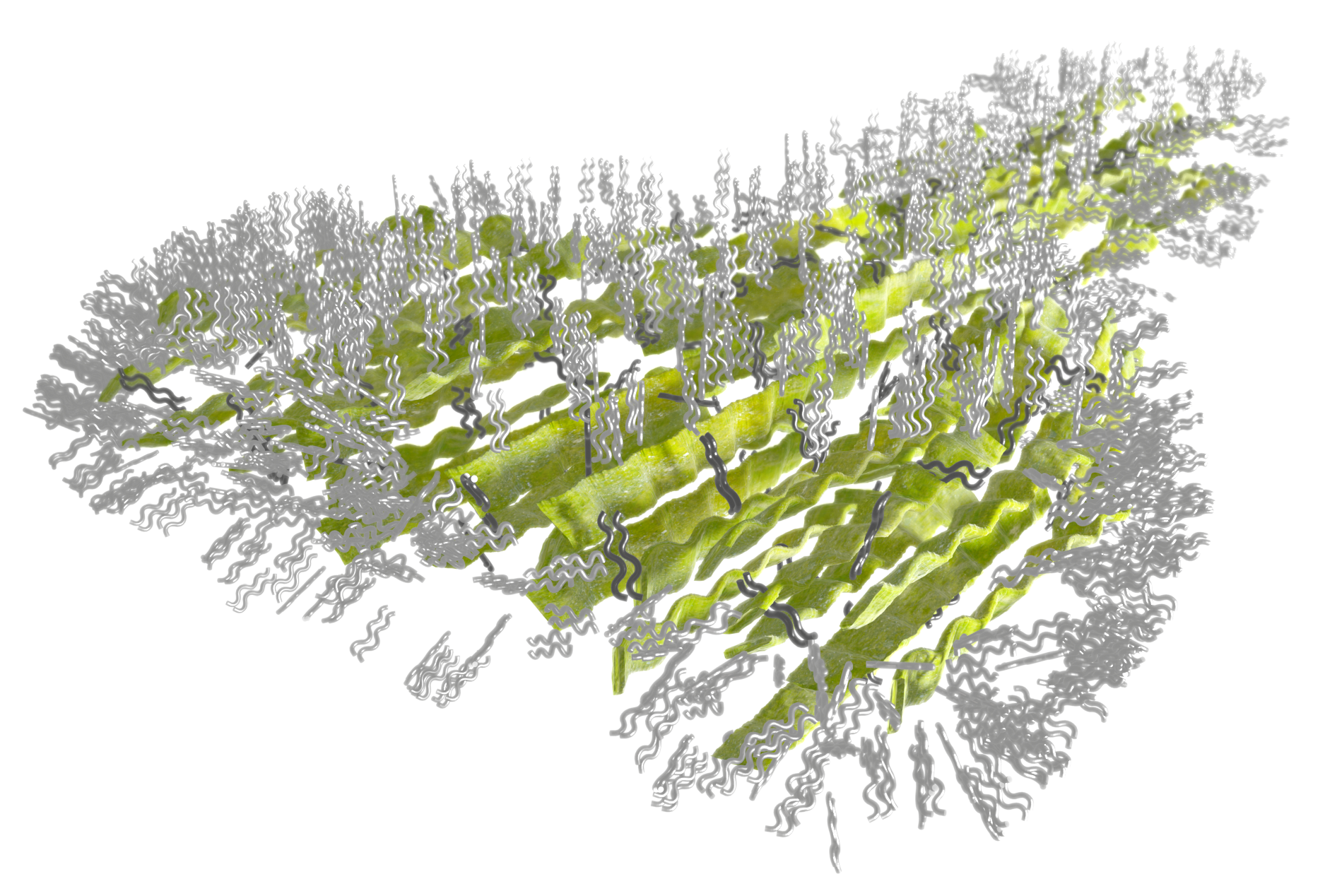Geckos are known for having sturdy feet that enable them to easily scale vertical surfaces. Millions of microscopic, hair-like structures on their toes provide them with this apparent superpower.
 An illustration of a gecko spatula, a nanometer-scale structure on the animal’s toes that contribute to its grip. The green sheets represent keratin proteins. The gray squiggles represent lipid molecules. Based on data from NIST’s synchrotron microscope. Image Credit: Marianne Meijer/Kerncraft Art & Graphics
An illustration of a gecko spatula, a nanometer-scale structure on the animal’s toes that contribute to its grip. The green sheets represent keratin proteins. The gray squiggles represent lipid molecules. Based on data from NIST’s synchrotron microscope. Image Credit: Marianne Meijer/Kerncraft Art & Graphics
Researchers have now zoomed in for a deeper inspection of those structures, known as setae, and discovered that they are coated in an ultra-thin film of water-repelling lipid molecules only one nanometer (or a billionth of a meter) thick.
The National Institute of Standards and Technology (NIST) examined the surface of the setae using high-energy X-rays generated by a synchrotron particle accelerator. The synchrotron microscope disclosed that lipid molecules on the surface of the setae form tightly packed, organized arrays.
The results were published in Biology Letters by an international research team. A previous paper in Physical Chemistry Letters used the same method to demonstrate how the individual protein strands that comprise the setae are associated.
A lot was already known about how setae work mechanically. Now we have a better understanding of how they work in terms of their molecular structure.”
Cherno Jaye, Study Co-Author and Physicist, National Institute of Standards and Technology
Geckos, such as adhesive tapes with setae-like microstructures, have inspired several products. Understanding the molecular characteristics of setae may inspire inventors who draw inspiration from nature—a system known as biomimicry—to create even better designs.
Setae offer adhesion since they are versatile and comply with the microscopic contours of the surface the gecko is attempting to climb. Even smaller structures called spatula at the ends of the setae make such close contact with the climbing surface that electrons in both materials interact, resulting in a type of attraction known as van der Waals forces.
To free its stuck foot, the gecko changes the direction of the setae, impeding those forces and letting the animal take its next move.
Lipids can play a part in this procedure since they are hydrophobic, which means they prevent water.
“The lipids might function to push away any water beneath the spatulae, allowing them to make closer contact with the surface,” said physicist and co-author Tobias Weidner of Aarhus University in Denmark. “This would help geckos maintain their grip on wet surfaces.”
The setae and spatula are formed of keratin protein, which is found in human hair and fingernails. They are extremely fragile. The scientists found that the keratin fibers are positioned in the direction of the setae, which may aid in abrasion resistance.
The most exciting thing for me about this biological system is that everything is perfectly optimized on every scale, from the macro to the micro to the molecular. This can help biomimetic engineers know what to do next.”
Stanislav Gorb, Study Co-Author and Biologist, Kiel University
“You can imagine gecko boots that don’t slip on wet surfaces or gecko gloves for holding tools that are wet,” said NIST physicist and co-author Dan Fischer. “Or a vehicle that can run up walls, or a robot that can run along power lines and inspect them.”
The scientists used a NIST synchrotron microscope to analyze the setae, which is dependent on its ability to recognize molecules on the surface of a three-dimensional object, quantify their orientation, and trace their position.
It is housed at the United States Department of Energy’s Brookhaven National Laboratory, where the National Synchrotron Light Source II, a half-mile-long particle accelerator, offers illumination in the form of high-energy X-rays.
This microscope is commonly used to study the physics of advanced industrial materials such as batteries, semiconductors, solar panels, and medical products.
“But it is fascinating to figure out how gecko feet work,” Fischer said, “and we can learn a lot from nature when it comes to improving our technology.”
Source:
Journal reference:
Rasmussen, M. H., et al. (2022) Evidence that gecko setae are coated with an ordered nanometer-thin lipid film. Biology Letters. doi.org/10.1098/rsbl.2022.0093.